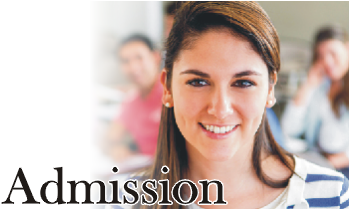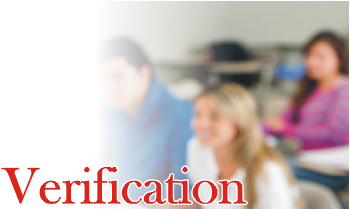About The BSEI Islamabad
Recognition of prior Learning (RPL)
Recognition of prior Learning (RPL) is a process by which an authority assesses the knowledge, skills and competencies of a person which he has acquired through informal or non-formal learning, to count towards a nationally recognized qualification.
PURPOSE OF RPL
This process is used to evaluate learning acquired outside the class room for the purpose of :-
a. entry to programmes,
b. exemptions from programme requirements,
c. Eligibility for a full award within the framework of qualifications.
BENEFITS OF RPL
1. System acknowledges & validates value of life-long-learning out-side a formal setting.
2. Facilitate access for workers, who may not have the opportunity to do further study/training.
3. Enables progression for further study or career.
4. Shorten the time & reduces the cost necessary to earn a qualification.
5. Enhances worker’s pride & self esteem for what they have accomplished.
CHALLENGES
1. Ensure quality & credibility.
2. Uniformity of standards to assess the learner.
3. Recognition of credits towards further study/ training (vertical integration).
4. Guidance / assistance for self evaluation of learners opting for RPL.
PREPARATION REQUIRED
1. A list of Qualifications for different trades.
2. A list of institutions to offer assessment in identified Qualifications.
3. Training of staff to work as assessor for RPL.
4. Development of SOPs to register the workers, to deliver academic part of curricula, and their assessment & certification
5. Development of Software to tabulate & process data and to keep record of all registered and certified workers.
Recognition of Prior Learning (RPL)
As people increasingly undertake course and study at differing stages of their lives they acquire skills and competences across a variety of areas. Some of this learning may be certified by an academic or educational institution; while other may be uncertified learning gained through work, community or leisure time activities. The Recognition of Prior Learning (RPL) involves considering a student's previous certified and uncertified learning in order to facilitate access to a programme of study, or to grant exemptions from elements of a programme. Various terms are used to describe this process.
What terms are used to describe recognition of prior learning?
There is no consensus about an acceptable term. There are a number of terms that have been used to describe the process of recognizing the skills and knowledge gained from work experience, life experience and formal training. These include:
Recognition of prior learning (RPL)
Accreditation of prior learning (APL)
Accreditation of prior experiential learning (APEL)
Prior learning assessment, recognition of skills (PLAR)
Recognition of current competencies
The terminology, and the assessment or evaluation criteria used vary greatly between institutions, organizations and countries. There is growing recognition that it is necessary to recognize informal, as well as formal, learning if we are to make learning accessible to all. As this area is evolving constantly, both learners and education providers need to be aware of the most recent developments and policies at local and national level. It is not possible to outline the full and complex debate about recognizing prior learning here, so the next section will look briefly at some of the benefits of recognizing prior learning.
What are the benefits of recognizing prior learning?
Facilitates access for 'non-traditional' students - people who may not have the opportunity to do further study can obtain higher qualifications
Acknowledges value of learning outside a formal setting, e.g. values and recognises learning in the workplace
Validates the worth of learning students have achieved by themselves
Enables progression to other programmes of study
Eliminates unnecessary repetition and duplication of material already familiar to the student. Public (and private) money is better used because people who already have skills and knowledge are not re-trained.
Shortens the time necessary to earn a qualification - this motivates students who might otherwise be discouraged by the length of time required to complete a college level course or a particular programme of study
Enhances students' pride and self-esteem for what they have accomplished as learners
Enhances students' perception and understanding of learning as a lifelong process
How is prior learning assessed?
Prior learning can be assessed in a number of ways. However, as mentioned earlier this recognition and validation process varies significantly between educational providers and across countries. One method that might be used is a portfolio.
Portfolios
Portfolios allow a learner to document and demonstrate his/her knowledge of a given subject area. Just as artists build portfolios of their artwork to show people what they can create, a student can build a portfolio that provides details of his/her life experiences and learning accomplishments. The portfolio will document what has been learned, where and how the student learned it, and how the student's experiences meet the requirements of the course provider.
What to include in a portfolio
The portfolio, for the life long learner, can be used for taking stock of professional/personal achievements to date, and for setting personal/career goals.
The materials found in a portfolio may be wide and varied according to the purpose of, and audience for, the portfolio. Items which might be incorporated into a portfolio include: essays, surveys, notes, self-evaluations, certificates, reports, research, maps, photos, letters, tests, articles, illustrations, statistics, pamphlets, short and long-term goals, presentations, journal entries, budgets, personal and professional philosophies, curriculum vitae, poetry and reflective summaries.
Ideally students should be given guidelines by the education institution about what to include in, and how to structure, a portfolio. The education institution needs to determine how a student can demonstrate skill or competence in a particular area, and then draw up guidelines for how this can be achieved.
Our Team

About the Admissions

About the Diploma Verification
